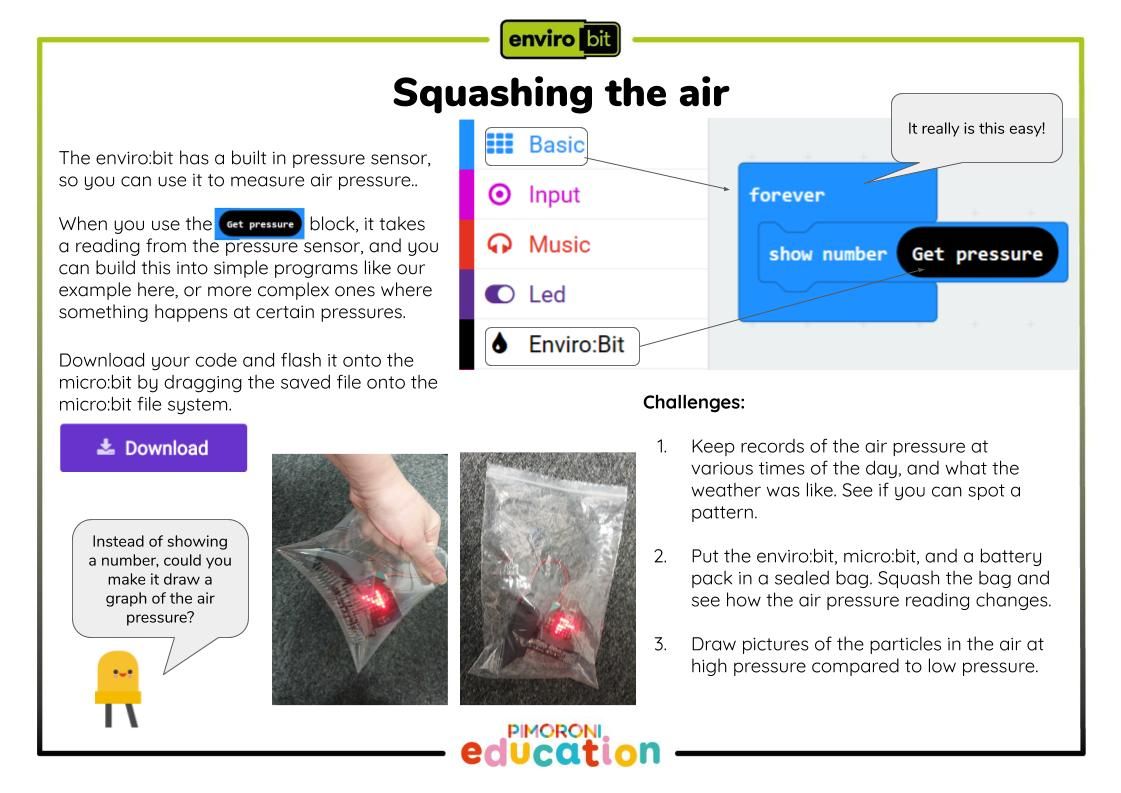The enviro:bit, among other things, measures air pressure, but what is air pressure? Air is the mixture of gases around us, and it moves around, it gets squashed, unsquashed, added to, and taken away from, on a constant basis. Air pressure is a measure of how close together the particles of gases in the air are. If they're squashed together, we call it "high pressure". If they're further apart, we call it "low pressure". These measurements can be used to predict the weather, and to tell you how high up you are, amongst other things.

The air pressure is shown on the micro:bit (using this example) in hectoPascals (hPa). The units we measure pressure in are named after Blaise Pascal, a mathematician from the 1600's, who did a LOT of investigating, experimenting, and proving things with maths.
You can try changing the air pressure by putting the micro:bit, enviro:bit, and a battery pack in a bag. Load the program above, and leave it running inside the bag. Look at the air pressure when the bag is open, when it's sealed shut, and when it's sealed and you squash it. When it's squashed, the number should be higher, because you are pushing more particles onto the sensor.
The average air pressure at sea level is 1013.25 hPa. The number should go down, the higher you go up, as the particles are further apart (and this is also why fighter pilots who fly up high need an oxygen mask, and airlines need pressurised cabins).
On the ground, the air pressure changes because of the changing temperature of the air. If air warms up, it rises, which leaves fewer particles near the ground, so you get lower pressure. If the air cools down, it sinks, which brings more particles nearer the ground, so you get higher pressure. As air moves past other air you feel it as wind, and if some hot air meets some cold air you get LOTS of wind. This is why, if you keep track of how the pressure is changing, you can tell if your air is warming up or cooling down, or if it's going to be stormy.
You can find out more about high and low pressure in this article from the Met Office.